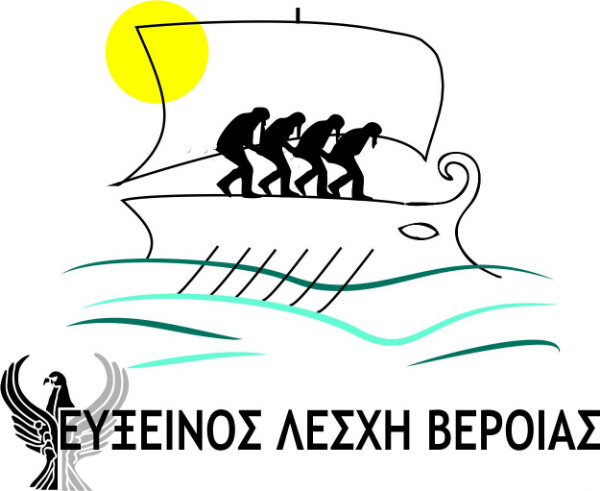The following article is an excerpt from the one volume synopsis of a fourteen-volume set entitled The Genocide of the Greeks of Pontus by Dr. Constantine Fotiadis, Professor of History at Aristotle University in Thessaloniki Greece.
Members of the Pontian Greek Society of Chicago have translated the following article from Chapter E’, that is posted here with the permission of Dr .C. Fotiadis.
Due to disagreement over the policy of pogroms implemented by the military command of their country, it has been established that certain German diplomats made successive appeals to the civilian administration aiming to free themselves of any liability regarding the Young Turks’ genocidal measures, especially after the world-wide protest over the Armenian Genocide. On July 16 1916, Kückhoff, the German consul in Samsun, informed the German Ministry of Internal Affairs in Berlin that he had: “valid information that the entire Greek population of Sinope and the coast of Kastamoni province have been sent into exile.
According to the Turks, exile equals extermination, because even those who escape being murdered will die, mostly of disease and starvation.”558
Kwiatkowski, the Austrian vice-consul in Samsun, was also anxious about the new measures imposed by the Young Turks, initially against the male population, as this was certain to facilitate the realization of their goals. He therefore informed Buriàn, the Austrian Minister of Foreign Affairs, of the decisions taken by the mutesharif of Samsun, Rafet Bey: “On November 26, Rafet Bey told me: ‘We must finish off the Greeks, just like we did with the Armenians…’. On November 28 1916, Rafet Bey told me: ‘Now is the time to be done with the Greeks. Today I sent forces into the province to kill any Greeks they encounter’. I fear that all Greeks will be deported or exiled, much as I fear the repetition of last year’s actions.”559
However, these objective views bore no fruit, as the German government did not pay heed. It is now generally accepted that the Young Turks would never have dared to instigate the murder of three million people—Armenians, Greeks, Syrians and several other Christian minorities in Asia Minor—without the political and military assistance of Germany, which had provided for the reorganization of the Ottoman army in 1913. In support of this view, Assyrian refugee G. Yonan stated that the massacre of Christians would have been impossible to accomplish, at least to this extent, had it not been for the support of Germany’s military force in Turkey, which, during World War I, had been reinforced with over 800 German Army officers, fully equipped and financially supported by the German Government.560
Death in its most horrible form was now omnipresent on the Black Sea coast. The Greek embassy in St. Petersburg informed the Greek Ministry of Foreign Affairs of the plight of Greeks living in the area around Trebizond:
…On April 15, the Greek inhabitants of 16 villages in the Vazelon area, Trebizond province, were ordered to relocate to the interior of Argyroupolis by the Turkish authorities. Fearing that they might be slaughtered on the way, as happened to the Armenians, they abandoned their households and entered the forest, hoping to be saved by a quick Russian advance. Of this population, which amounted to some 6,000 people, 650 sought refuge in the Monastery of Vazelon, in which there were already another 1,500 refugees from Trebizond; 1,200 crept into a cave close to the village of Kounaka, and the rest scattered around various hiding places in the surrounding forest. All the houses in these villages were plundered and all property found was looted by the Turkish army.
Those who had hidden in the cave were forced to surrender due to starvation. In order to avoid being ravaged, 26 girls and women threw themselves into the river which lies close to the village Gefyra and drowned, despite all efforts to save them… After the Russian army had advanced to Argyroupolis, Dr. K. Fotiadis and I were the first to reach the Monastery of Vazelon. I have to admit that it is impossible for me to describe what I witnessed. Everything was torn to pieces, both in the villages and in the Monastery… Five Greek corpses lay unburied and decomposing in the yard of the monastery… Inside the Monastery, with a gaping lance wound in the chest, lay the naked, decapitated body of Kyriaki, a 20-year-old young woman from the village of Thersa in a position indicating how she had been violated.561
On September 7 1916, Mithrinek, who had been appointed German ambassador after the recall of von Metternich, informed Berlin about the clearing actions undertaken by the vali of Kastamonu against the Greeks: “In Sinope, the operation lasted four hours. The Greek population, amounting to 4,500 people, was transferred partly to Boyabat and Kastamonu and partly to Turkish villages in the vilayet. The same measures were applied in Inepolis, as well as some other villages.”562
Having learnt of the atrocities being committed by their allies, the Austrian consuls changed tack and started to send explicit telegrams to the Austrian Ministry of Foreign Affairs containing specific references to the great danger threatening the Greeks. To some extent, their German colleagues followed the same method, albeit within the bounds of diplomatic decorum, in partial proof of their nation’s liability.
In December 1916 and January 1917, Pallavicini, the Austrian ambassador to Istanbul, informed his government of the latest events on the Black Sea coast, and specifically the fate of Samsun:
“December 11 1916. Five Greek villages were plundered and burned. The inhabitants were sent away.

